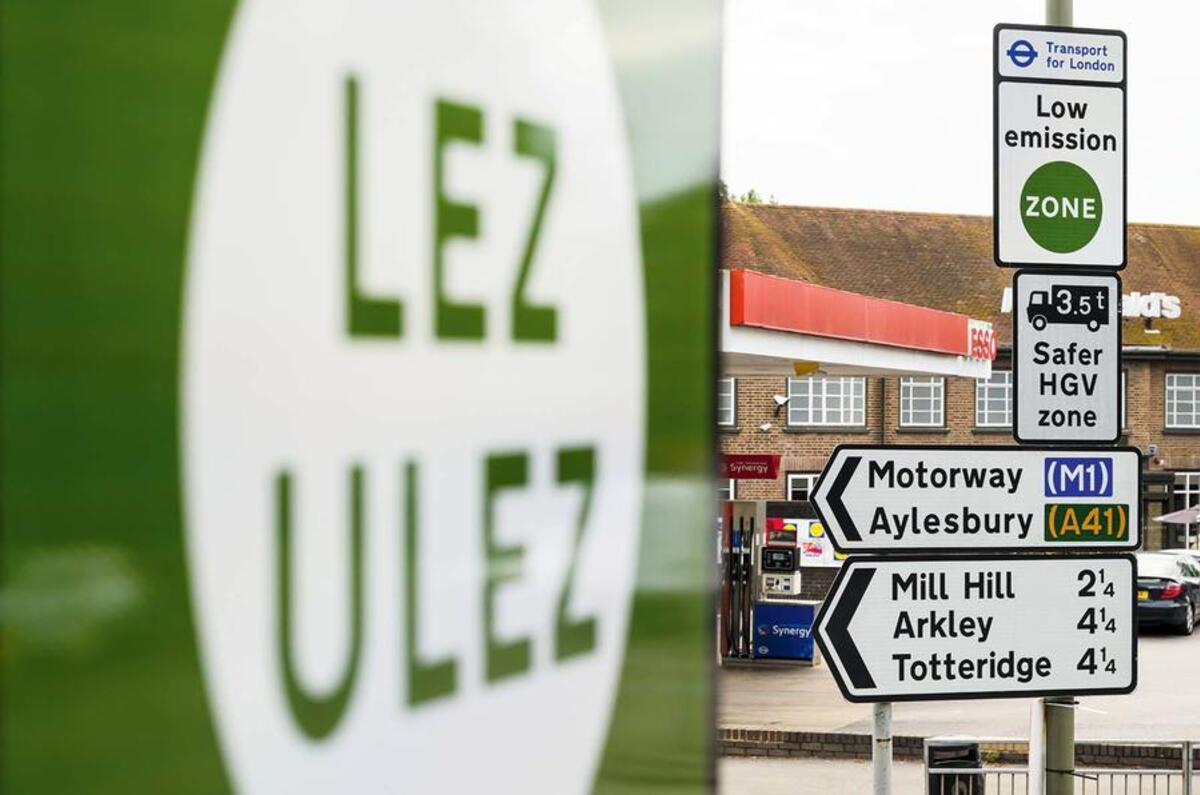London's Ultra Low Emission Zone (ULEZ) has become a key issue in the run up to the general election on 4 July.
One of many clean air zones in operation around the UK in a bid to reduce roadside emissions, it requires drivers of some older cars to pay a fee to drive through the city.
It was expanded to encompass all of Greater London on 29 August 2023 – a move that proved especially controversial on the capital's outskirts.
The Labour Party blamed its loss in Uxbridge's July 2023 by-election on the expansion, prompting the rival Conservative Party to adopt several pro-motorist policies, including shrinking the ULEZ back to its original size.
That agenda has only been magnified by the increasing pace of campaigning, with the election just weeks away.
Here's everything you need to know about the ULEZ:
When was the ULEZ introduced?
Initially proposed by former London Mayor Boris Johnson in 2015, the ULEZ is a continuation of the T-Charge introduced by Sadiq Khan in 2017, which charged motorists £10 to drive vehicles that did not meet the Euro 4 emissions standard into the central London congestion charge zone.
ULEZ replaced the T-Charge in April 2019. It upped the fee to £12.50 and operates 24 hours a day, seven days a week, apart from Christmas Day.
In October 2022, the London ULEZ drew over £90 million in eight months, with an average of 1.9 million journeys made into the zone each month.
Plans to introduce an even more restrictive zero-emission zone, meanwhile, in central London were shelved following the most recent expansion of the ULEZ.
Where does the London ULEZ operate?

On 25 October 2021, the ULEZ grew to encompass the area within the borders of the North Circular and South Circular arterial roads.
The ULEZ was further expanded in 2023, now encompassing each London borough - the entire area inside the M25 - as well as Heathrow Airport.
This means drivers of some older cars need to pay a fee to drive through the city, and visit various other important locations.
How does the ULEZ work?
London's ULEZ currently uses a series of cameras at junctions and along major roads into London. These automatically read registration plates and reference them against a database to identify whether vehicles are, or are not, compliant with the required emission standards.
You can check to see whether a postcode is inside the ULEZ on the Transport for London (TfL) website.
If you drive a non-compliant vehicle into the ULEZ, you must pay the £12.50 fee by midnight on the third day following your journey. For example, if you enter the zone while commuting on a Monday morning, you must pay by 00:00 on the following Thursday.
![]()
You can also pay the ULEZ charge up to 90 days ahead of your journey, or set up automatic monthly payments for travel within the zone.
The only time of the year when the ULEZ is not operational is Christmas Day (25 December). It is active 24 hours per day for the rest of the year.
See below if you will have to pay to enter the zone in your vehicle, and how much you might be charged.
Can my vehicle enter ULEZ?

Petrol and diesel cars and vans, as well as motorbikes, are all held to different standards for compliance with the ULEZ.
Petrol cars must meet the Euro 4 standard for nitrogen oxide (NOx) emissions, emitting fewer than 0.08 grams of NOx per kilometre driven.
Most petrol models registered as new since January 2006 (when Euro 4 came into effect) meet this benchmark, and a select few models produced before then are also compliant. For example, a 2003 Ford Fiesta fitted with the 1.4-litre Zetec engine is ULEZ compliant because it emits fewer than 0.08g/km of NOx.
Diesel vehicles must meet the Euro 6 standard for NOx and particulate matter (PM) emissions, requiring a car to put out fewer than 0.08g/km of NOx and 0.0045g/km of PM.
Most diesel cars registered after September 2015 (when the Euro 6 rules began) are compliant, but there are a select few models made earlier that also meet the mark.
These include Citroën C4 Picassos fitted with the 2.0-litre BlueHDi 150 powerplant and produced after November 2014, as well as Mk7 Volkswagen Golf GTDs (produced from August 2013 to 2020).
![]()
Some cars that significantly pre-date the introduction of these emissions standards also meet the requirements, but need you to obtain a certificate of compliance (CoC) from its manufacturer to prove it.
You must then post a copy of the CoC and of your V5 to Transport for London (TfL) to have your individual vehicle registered as compliant. Owners of some Lotus Elise S1s (produced 1996-2001) have reported success with this method, for example.
Electric cars do not produce tailpipe emissions, so they are compliant.
How much does London’s ULEZ cost?

Driving a non-compliant car inside the ULEZ costs £12.50 per day. Charging days run from midnight to midnight, so if you entered the ULEZ at 10pm and left at 6am – working a night shift, for example – you would have to pay £25.00 because that is counted as two days within the zone.
What is the ULEZ scrappage scheme?

All London residents can apply to receive £2000 from TfL for scrapping a car that does not comply with ULEZ standards.
For a successful application, you must live within one of the 32 London boroughs and have been the registered keeper of the vehicle since 30 January 2022 (or earlier). It must also be insured, taxed and have a valid MOT. You should evidence these with a copy of the V5 and a valid insurance certificate.
If your application is approved, you must scrap the vehicle at one of TfL’s approved treatment centres within one month. The centre will provide a certificate of destruction, which you should send a copy of to TfL as evidence of scrappage.
Do not scrap the car until TfL has approved your application and told you to do so, because this is likely to bar you from receiving payment.
Once TfL has received and verified the evidence that you have scrapped your car, it will process the payment.
What cars are exempt from ULEZ?

As detailed above, most petrol cars registered since 2006, and diesels registered since September 2015 are compliant with the ULEZ.
However, classic cars that qualify for the historic vehicle tax exemption – built more than 40 years ago and registered as such with the DVLA – are also exempt from paying the ULEZ charge.
Additionally, all vehicles built before 1 January 1973 are exempt from paying the charge.
If you’re looking to replace your car with something more modern for driving in the ULEZ, read our guide to the best ULEZ-compliant used cars.
London ULEZ advice
Before driving through London, you should run your vehicle's registration through TfL's online ULEZ checker. That will tell you whether you need to pay to enter the zone.
If you're travelling through London on more than one day, you might want to consider setting up automatic payments to save yourself the hassle of repeatedly going online to pay the charge.
Various sat-nav systems and mapping apps offer an option to navigate around tolls such as the ULEZ, which may prove useful if you want to cross London – for example, driving from Brighton to Cambridge or from Swindon to Southend – in a non-compliant car.







Join the debate
Add your comment
Listening to Mt Khan right now on 5Live. The questioner asked how do you justify Londoners spending an extra £4000 a year and being the typical politician, Khan sets out what he wants to say rather then answer the question.
He startts off about a number of people dying due to polution, heart problems, breathing problems in kids etc all related to car pollution.
And this is where I if not anyone else gets very angry. What he's saying is for £4000 a year, you can continue to cause heart problems, you can continue to harm kids breathing etc.
If you want to stop these things then ban cars. It's as simple as that.
Right now help the BBC get it right, they keep stating petrol cars made before 2005 are non ulez compliant, how can they get it so wrong time and time again.
Mayoral election due next year, lets see what the candidates say about the future of these cameras.
There is no joined up thinking going in government whatsoever.
I was in Luton a few days ago buying a car with a pal who works there, lots of old offices being converted into accommodation, loads of people on the streets with no prospects. The place is packed.
On a lighter note, as he knows the area very well we parked for free !